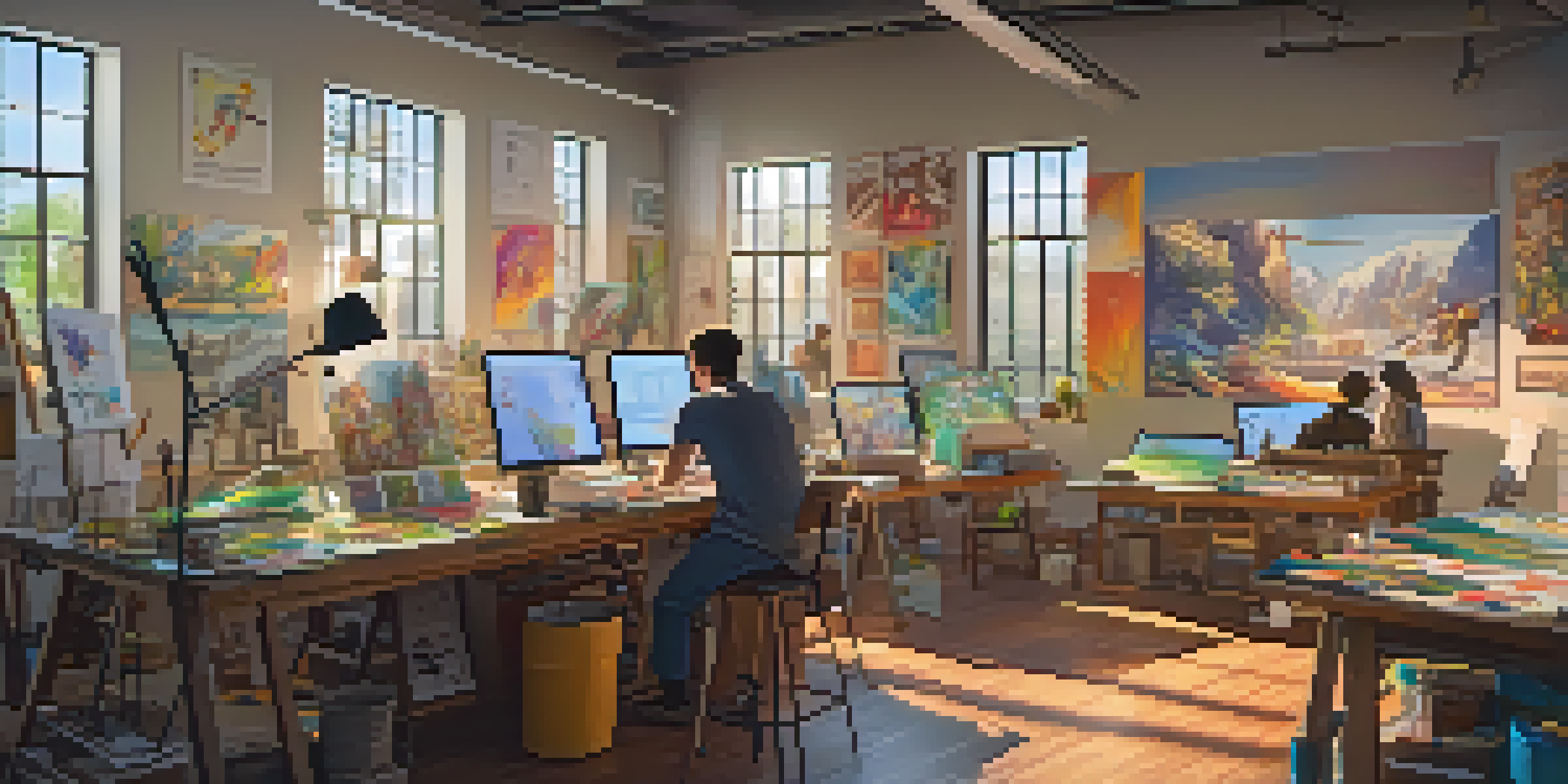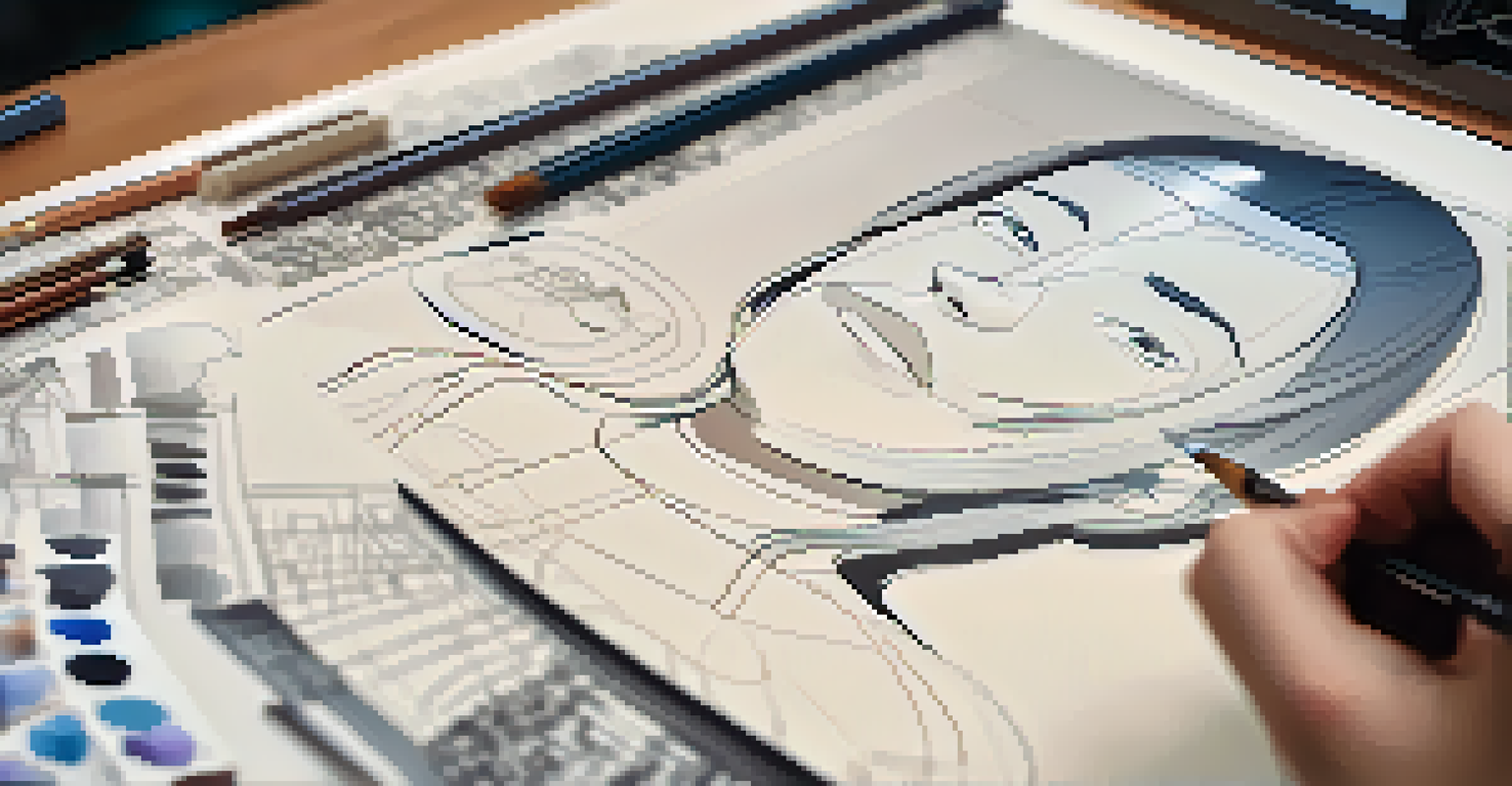Animation Techniques: Crafting Unique Hollywood Narratives

The Evolution of Animation Techniques in Hollywood
Animation has come a long way since the days of hand-drawn cells. From early classics like 'Snow White' to the advent of CGI, each era has introduced innovative techniques that push storytelling boundaries. Today, we see a blend of traditional methods with cutting-edge technology, creating a rich tapestry of animated narratives that captivate audiences.
Animation can explain whatever the mind of man can conceive.
This evolution reflects not just technological advancements but also changing audience expectations. Viewers now crave immersive experiences, leading studios to explore unique visual styles and storytelling approaches. The popularity of films like 'Spider-Man: Into the Spider-Verse' showcases how diverse animation techniques can create a distinct narrative voice.
As we delve deeper, it’s essential to understand how these techniques influence the emotional depth and engagement of a story. The seamless integration of styles allows filmmakers to craft unique experiences that resonate with audiences on multiple levels.
Understanding Key Animation Techniques
At the heart of animation are several key techniques, each bringing its own flavor to storytelling. Traditional hand-drawn animation, for instance, retains a nostalgic charm that many find endearing. In contrast, 3D animation employs computer-generated imagery to create lifelike characters and environments, enhancing realism while pushing the boundaries of creativity.

Stop-motion animation, although more time-consuming, offers a tactile quality that can evoke a sense of wonder. Films like 'Coraline' exemplify how this technique can craft compelling narratives with a unique aesthetic. Understanding these techniques helps us appreciate the artistry involved in bringing stories to life.
Animation Techniques Evolve Over Time
From hand-drawn cells to CGI and beyond, animation techniques have transformed storytelling, reflecting technological advancements and audience expectations.
Moreover, hybrid techniques are increasingly popular, combining various styles to create something entirely fresh. This approach allows filmmakers to experiment and engage audiences in new ways, keeping the art of animation vibrant and dynamic.
The Role of Storyboarding in Animation
Storyboarding is a crucial step in the animation process that lays the foundation for visual storytelling. It involves sketching out scenes in sequence, allowing filmmakers to visualize the flow of the narrative before production even begins. This technique ensures that every shot contributes meaningfully to the story.
The greatest gift of the storyteller is the ability to make us believe in the impossible.
A well-executed storyboard helps to identify pacing, character movements, and even emotional beats. Think of it as the blueprint of a building; without it, the final product may lack coherence and impact. This pre-visualization stage is where creative ideas can be tested and refined.
Additionally, storyboards facilitate collaboration among team members, from animators to directors. By providing a clear vision of the narrative, everyone can align their efforts, ultimately enhancing the quality and cohesiveness of the final animation.
Character Design: Breathing Life Into Animation
Character design is pivotal in animation, serving as the bridge between the audience and the story. A well-designed character not only looks appealing but also embodies the traits and emotions central to the narrative. For example, think of how the distinctive features of characters like Shrek or Elsa instantly convey their personalities.
Designers often draw from a variety of influences, including cultural elements and personal experiences. This diversity enriches the storytelling, allowing viewers to connect with characters on a deeper level. The visual language of a character can evoke empathy, humor, or even fear, depending on the narrative's needs.
Character Design Shapes Emotions
Effective character design not only makes characters visually appealing but also conveys essential traits and emotions that resonate with viewers.
Moreover, character design must adapt throughout the film to reflect emotional growth and change. This dynamic nature of design adds layers to the storytelling experience, making animated characters relatable and memorable.
The Importance of Voice Acting in Animation
Voice acting is an often-overlooked but vital component of animated storytelling. It brings characters to life, adding personality and emotion that visuals alone cannot convey. A great voice actor can turn a sketch into a relatable character with just the right tone and inflection.
Take, for instance, the iconic performance of Robin Williams as the Genie in 'Aladdin.' His dynamic vocal delivery not only provided humor but also depth to the character, making him unforgettable. The synergy between voice and animation creates a compelling narrative that resonates with audiences.
Furthermore, casting choices can significantly impact how a character is perceived. The right voice can evoke specific emotions, enhancing the overall storytelling experience and ensuring that audiences remain engaged throughout the film.
Music and Sound Effects: Enhancing Animated Narratives
Music and sound effects play a crucial role in animation, enriching the storytelling experience. A well-composed score can evoke emotions, set the tone, and provide cues for the audience on how to feel in various scenes. For example, the soaring melodies in 'The Lion King' amplify the film's emotional moments, making them resonate even more.
Sound effects also contribute significantly to the immersion of an animated world. From the rustle of leaves to the crunch of footsteps, these auditory elements create a believable environment that draws viewers in. Together, music and sound effects enhance the narrative, guiding the audience through the emotional landscape of the story.
Voice Acting Enhances Storytelling
Voice acting is crucial in animation, adding depth and personality to characters, which helps to create a more engaging narrative experience.
Ultimately, the collaboration between animators, composers, and sound designers can transform a good animation into a great one. This synergy elevates the narrative, ensuring that every moment is memorable and impactful.
The Future of Animation Techniques in Storytelling
As technology continues to evolve, the future of animation techniques appears boundless. Innovations in virtual reality (VR) and augmented reality (AR) are paving the way for immersive storytelling experiences that allow audiences to engage with narratives in unprecedented ways. Imagine stepping into an animated world and interacting with characters firsthand!
Moreover, advancements in artificial intelligence (AI) are beginning to influence animation production, streamlining processes and enabling new creative possibilities. These developments may lead to more personalized storytelling, where viewers can influence the direction of a narrative based on their choices.

As we look ahead, one thing is clear: animation will keep evolving, pushing the boundaries of storytelling. By embracing new techniques and technologies, filmmakers will continue to craft unique narratives that captivate and inspire audiences around the globe.